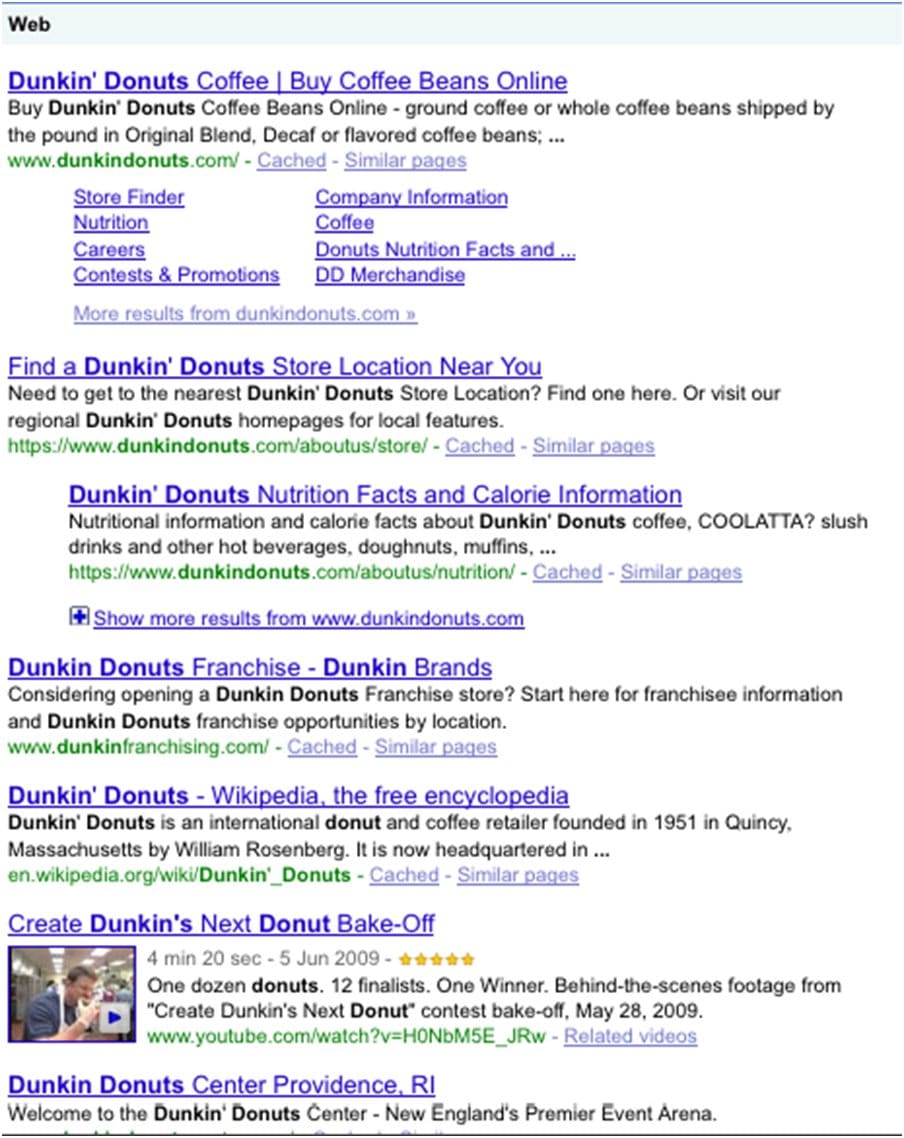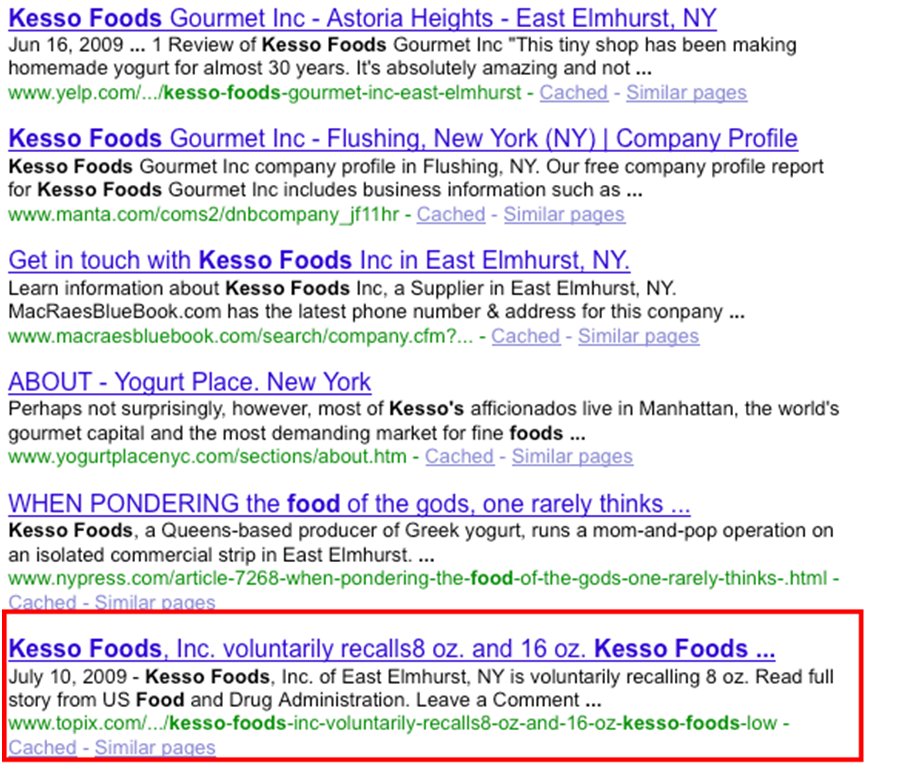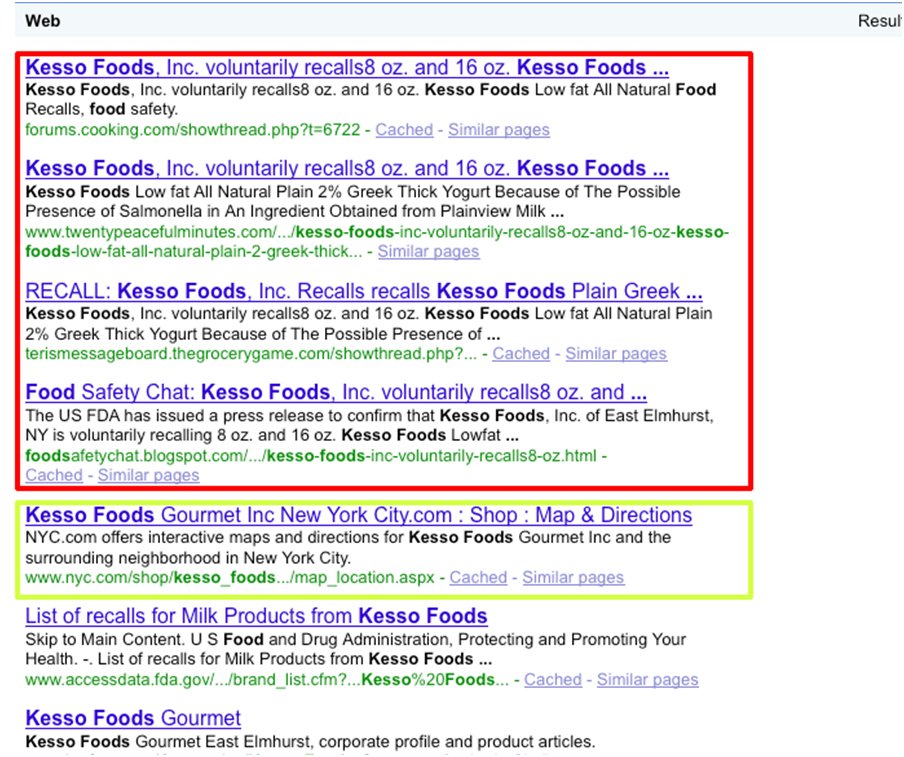The old reputation management adage is “want to know how to get 2 FDA.gov, 2 WashingtonPost.com, 1 CNN.com & 2389 blog links this week?” The answer (of course) is to accidentally injure people with your product. Â Trust us, getting the ensuing horrible results pushed off search engine results pages (SERPs) will be much tougher than placing them in the first place.
Clients come to us wondering why they are unable to easily squeeze down negative search engine results for brand names, after PR debacles or other difficult incidents. In other words after the news results clear the SERPs, why do negative .gov, news or some prominent blog pages STILL rank above corporate controlled or “friendly-sentiment” content for direct brand searches ( i.e. “Brand Name”)? Such questions torture CEOs and CMOs alike.
Simply put, in order to expunge any result from Google, content of equal or greater “relevance & value” must be created and/or built. Google’s index mirrors real-world authority and informational structures in physical life. Â It takes a seriously powerful SEO event and/or incremental link building to usurp extremely high authority sites.
The reason FDA.gov content remains permanently prominent in Google’s index, speaks to the realities of physical life. Have an objective look at at what news transients have affected search results permanently.  In most brands, it’s plain to see that the Google’s unpersonalized page 1 simply houses some of the top PR/social/news events all time for that brand.
We like to say that the events were either created “in-house” or “out-house.”
For instance, you can see that Dunkin’ Donuts has done an good job brand building to blow ugly content far enough out of Google SERPs for the crucial keyword “Dunkin’ Donuts.” As with many major food brands, there are a lot of nasty results out there. It’s cool that they’ve been able to generate more authoritative goodness buzz than all the icky chatter out there. They win.
The first questionable result, which is worse than neutral in terms of sentiment, Shows on page 2. Otherwise page 1 is all about bakeoffs and selling franchises.
Kesso Foods on the other hand has not generated enough positive buzz in real life, to counter the results stemming from a recent FDA recall of ingredients in the SERPs. The same powdered milk FDA recall Dunkin’ Donuts had to deal with. Heck, they don’t even seem to have their own website. Check out position 6.
In fact there are 3 damaging results on page 1. That’s not what Kesso Foods wants their customers to see. Page 2 is really a bummer, with recall results totally obscuring good.
The bottom line is that all SERPs defense plans should be about creating indexable permanent PR/news/social events and hybrids thereof of good things.
Here are a few tips and tricks for doing so:
- Tweak content for the existing subdomains already in use and optimize them for ranking on the brand term. We see subdomains indexed alongside the mother domain for keywords. It only makes sense to optimize them.
- If there is a reasonable purpose for a new subdomain, don’t rule it out. They’re loosely associated with main domains according to latest correlation data. They receive and confirm some authority to/from the mother ship. Channel some power right out of the gate in the SERPs
- Be open to additional domains, using brand terms. Just make sure there is a legitimate purpose for the domain’s existence. Be very careful not to set up link farms.
- Work to an appropriate feed accepted to Google news. Though news rises and falls in cycle over the course of days and often does not remain, the transient wave impacts users’ daily perception of brand in the SERPs. Also some authority news does linger and/or last permanently as representative artifacts of incidents and events.
- In order to counter high authority results, a brand’s high authority results must exist. In order to create those, links from high authority content must be built.
- In order to achieve this, significant public relations (or content followed by holistic link building) must be generated and synchronized with search.
- Integrate video creative and strategies with search objectives. Engage in YouTube and build external links to YouTube assets for indexing in Google’s organic SERPs by way of Universal Search. Surround the video with multi channel public relations when possible. Video buzz can garner major links to both YouTube and feed assets. Either way it’s all good.
- Make PRs objective to build reasons for extremely high authority sites like NYTimes, WP, etc…to cite either events, methods, ANYTHING unique about the brand. Typical ideas include “value intersecting with quality in a recession,” “brand’s approach in social media, the 7 classic nodes of public relations, etc…”
- Those efforts are can be rooted in the brick world currently with PR firm. Always encourage 3-way dialog between search objectives, brick PR players the community manager. Each needs to reflect to others’ to total benefit.
- While social media program can be glossy, engage customers to an extent and very pro looking, there is not always a systematic approach to engaging mid and big time writers who would write about the brand and link. Even in some established programs, PR benefits of social media programs remain to be mined.
- Take what Google and other mainstream engines freely give. Use social media profiles for their raw ranking power. Much has been written on this topic.
- Use a professional search-marketing agency to provide training in these types of strategies. Objectively (and respectfully), pros are the most equipped to provide these types of services and/or training.
- We recommend the community manager take training in using the feeds to bait writers, on and off line, who are included in Google News along with other feed marketing techniques.












